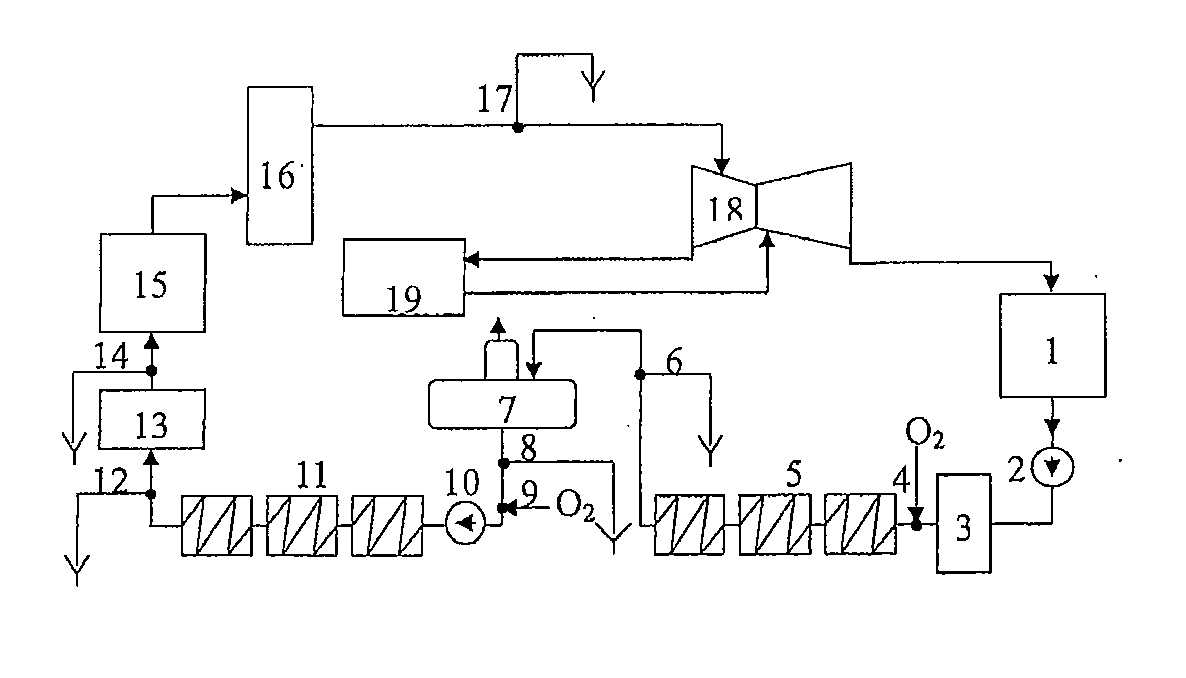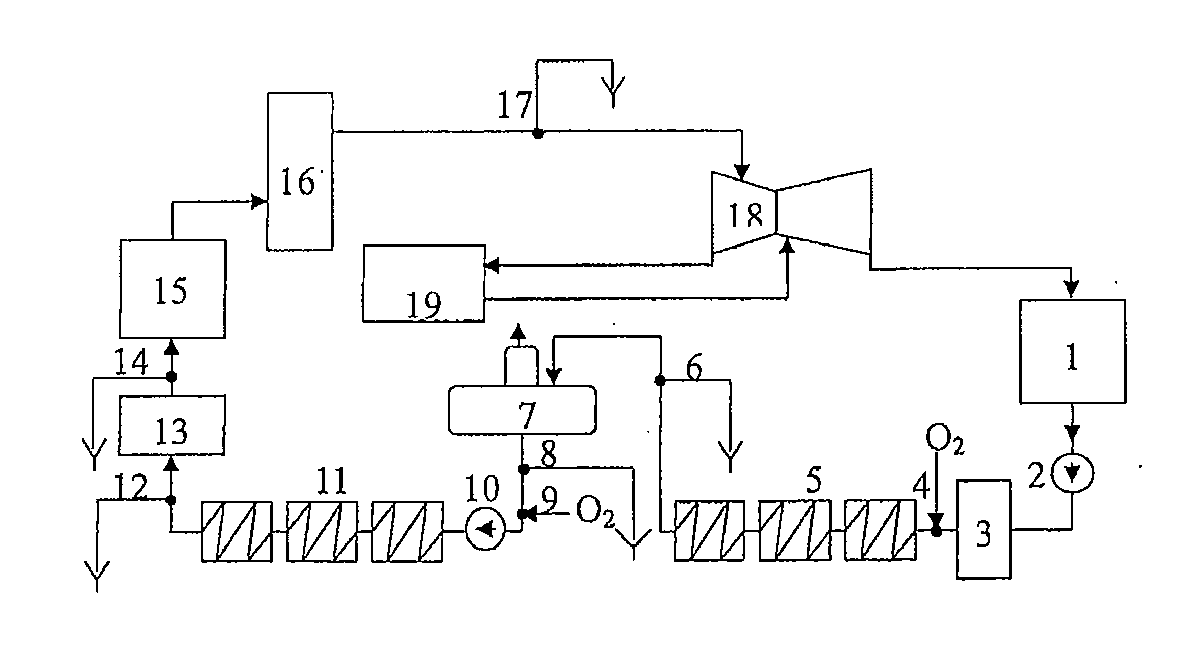Process for feed-water oxygenating treatment in boiler in power station
a technology of oxygenation treatment and feed water, which is applied in the direction of oxidation treatment of water/sewage, water/sewage treatment by degassing, lighting and heating apparatus, etc. it can solve the problems of high scaling rate, insufficient inhibition of flow accelerated corrosion (fac) of feed-water system, and significant decrease in the efficiency of power sets. , to achieve the effect of reducing maintenance, reducing iron content in feed water, and significantly reducing the amount of oxygen consumption
- Summary
- Abstract
- Description
- Claims
- Application Information
AI Technical Summary
Benefits of technology
Problems solved by technology
Method used
Image
Examples
example 1
[0029]Before carrying out the process of the present invention, the content of iron ions in the feed water in the monotube type boiler unit of 1000 MW supercritical unit somewhere in Zhejiang
[0030]Province was sometimes out of the standard, with an average content of iron ions in the feed water of 1.92 μg / L, and a maximum of up to 14 μg / L. The deposition of metal corrosion product frequently occurs at the throttle orifice of the water cooling wall, and the boiler unit had to be shut down and cleaned once a quarter. After carrying out the process of the present invention, the content of iron ions in the feed water keep stable at 0.5 μg / L for a long time, and there was no blocking of throttle orifice or the peeling off of the oxide skin from the high-temperature heated surface during a continuous operation of about 400 days. The amount of oxygen during the operation is listed below in table 1:
TABLE 1amount of oxygenation during the operationof the supercritical unitamount of oxygenati...
example 2
[0031]Regarding a high parameter drum type boiler, for example a 600 MW subcritical drum type boiler in Zhejiang Province, it had an average content of iron ions in the feed water of 4.89 μg / L, and a maximum of up to 10 μg / L, as well as a high speed of scaling on the water wall, before carrying out the process of the present invention. After performing the process of the present invention, the content of iron ions in the feed water keeps stable at 2.5 μg / L for a long time, and there was no peeling off of the oxide skin from the high temperature heating surface. The amount of oxygenation during the operation is listed below in table 2.
TABLE 2the amount of oxygenation during the operation of the boileramount of oxygenationdecreased oxygenationnormal oxygenationfilm-supple-oxygenation stageconverting stagementing stageamount of oxygenation in50 μg / L~150 μg / L50 μg / L~150 μg / Lthe condensate systemamount of oxygenation in50 μg / L~150 μg / L5 μg / L~15 μg / Lthe feed water system
PUM
| Property | Measurement | Unit |
|---|---|---|
| concentration | aaaaa | aaaaa |
| concentration | aaaaa | aaaaa |
| concentration | aaaaa | aaaaa |
Abstract
Description
Claims
Application Information
 Login to View More
Login to View More - R&D
- Intellectual Property
- Life Sciences
- Materials
- Tech Scout
- Unparalleled Data Quality
- Higher Quality Content
- 60% Fewer Hallucinations
Browse by: Latest US Patents, China's latest patents, Technical Efficacy Thesaurus, Application Domain, Technology Topic, Popular Technical Reports.
© 2025 PatSnap. All rights reserved.Legal|Privacy policy|Modern Slavery Act Transparency Statement|Sitemap|About US| Contact US: help@patsnap.com


